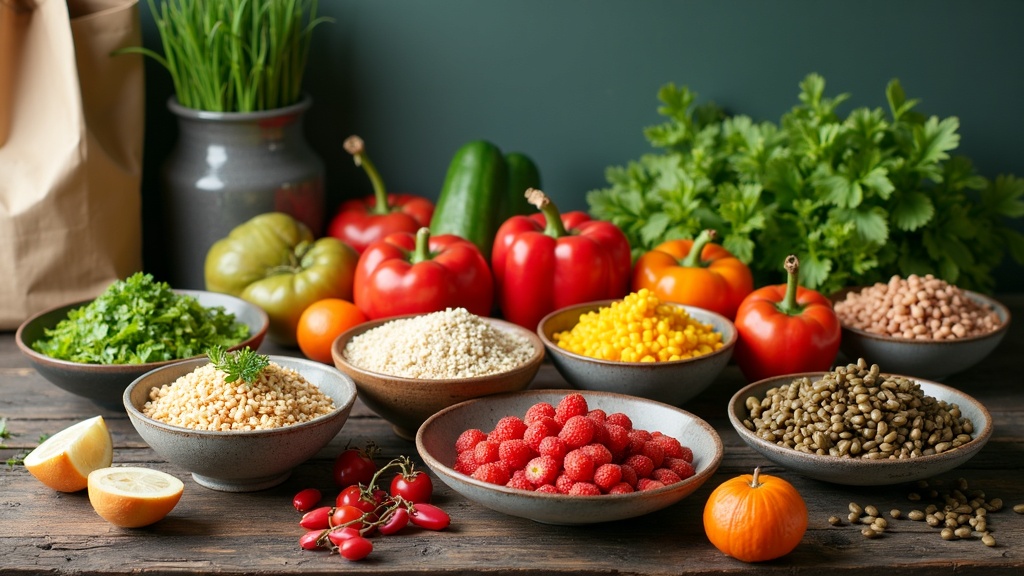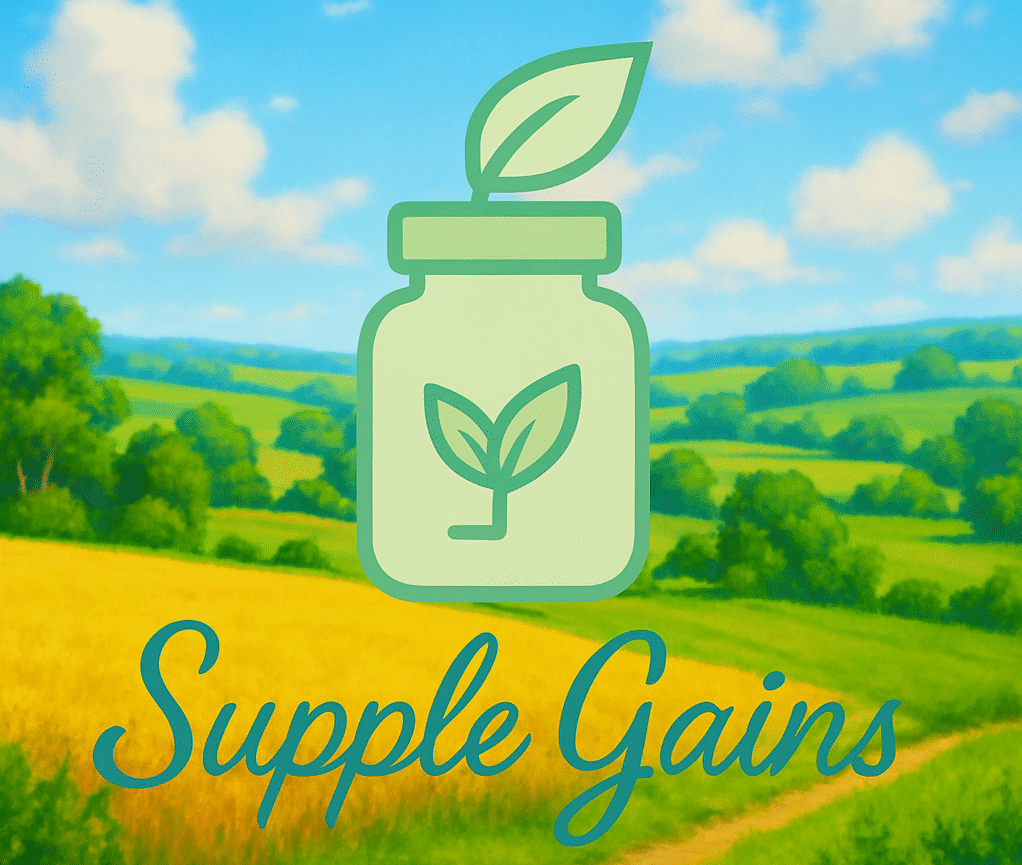Eating in a way that supports the environment is something I care a lot about.
Switching up our eating habits doesn’t just benefit the planet; it can also make meals more vibrant and meaningful.
Speaking up for environmentally friendly eating habits isn’t about grand gestures or being perfect.
It’s often the small steps and everyday decisions that create real change.
Here’s how I go about promoting greener eating, with some tips based on my own experience and plenty of research along the way.

Understanding Environmentally Friendly Eating
Eating habits that support the environment generally mean choosing foods with a low impact on land, water, and air.
This style centers on eating more plants, lowering animal products, picking local produce, and reducing food waste.
Sometimes it can feel overwhelming, but keeping things simple and focusing on what’s doable really helps.
Agriculture accounts for about a quarter of global greenhouse gas emissions, according to the United Nations.
Livestock, in particular, has a big role.
Raising animals for food takes up land and water, and it’s a major source of methane.
By swapping in more plants, buying ecofriendly products, and shrinking waste, anyone can make a positive impact without overthinking every bite or meal.
For anyone new to environmentally friendly eating, the key is finding balance.
You don’t have to go vegan to make a difference. Taking just a few steps forward is a win for both you and the planet.
How to Start with Environmentally Friendly Eating
Making greener food choices is easier when the process is divided into small, realistic steps.
These basics can help anyone set out on a good path:
- Choose more plants: Vegetables, fruits, grains, beans, nuts, and seeds have lower carbon footprints than most other foods.
- Cut down on animal products: Even minor decreases in meat and dairy can put a dent in environmental impact. Try making a meatless meal once or twice a week.
- Shop local and seasonal: Foods grown close by need less transport, which lowers their carbon footprint. Eating what’s in season often supports local farmers.
- Waste less: Get creative with leftovers and only buy what you’ll use. Compost scraps if you have space or access to a composting program.
- Pick ecofriendly packaging: Look for items with minimal plastic or singleuse wrappers, or bring your own containers and bags.
These changes really add up.
I found that starting with one habit, like meal planning to waste less, made it much easier to try new ecofriendly habits later on.
Action Steps to Advocate for Greener Eating Habits
Advocacy often means talking about ecofriendly choices, supporting others, and leading by example.
These are steps I’ve used and suggested to others:
- Lead by example: Share your meals, recipes, or grocery decisions with friends and family. Avoid lecturing; simply showing options is often more convincing than making an argument.
- Start conversations: Bring up the farmer’s market, new plant-based meals, or ecofriendly finds in group chats or at work. Most people are curious and glad to hear new ideas.
- Share resources: Send easy guides, helpful apps, or information about green grocers, bulk stores, or community gardens to people you know.
- Host or join community events: Potlucks, cooking classes, or farm visits make greener eating social and fun. Even sharing a “Meatless Monday” lunch at work can be a hit.
- Ask questions at restaurants and stores: Ask about local produce, plant-based options, or ecofriendly packaging. Regular interest can nudge businesses to stock greener options.
Stepping into an advocacy role doesn’t need to start with expert knowledge.
Honest curiosity and a willingness to start a conversation go a long way in shifting habits for friends, family, and the larger community.
Challenges in Switching to EcoFriendly Eating
Changing your eating approach isn’t always easy, and greener eating brings its own set of hurdles.
Here are the most common problems I meet, with solutions that work for me and others:
- Cost: People often think sustainable food is more expensive. Focusing on inseason produce, bulk bin staples (like rice, oats, and beans), and avoiding packaged foods usually keeps the budget under control.
- Limited options: Depending on your location, finding local, organic, or plant-based products can be a challenge. Frozen veggies, canned beans, and a good farmer’s market often fill in the gaps.
- Family and social support: It’s tough to make changes when others aren’t on board. Keeping things positive and sharing tasty dishes—rather than pushing the issue—gets more people to try something new.
- Time: Cooking from scratch needs extra effort. Quick recipes, meal prepping, or batch cooking can take the stress off and make it manageable for busy weeks.
- Confusing labels: Terms like “natural,” “eco,” or “green” can be meaningless or misleading. Look for actual certifications such as USDA Organic or Fair Trade, or do a quick check on the company’s sustainability policy.
Cost-Friendly Green Eating
You don’t have to spend a fortune for ecofriendly meals.
Bean chilis, hearty soups, and veggie stirfries made from discounted or inseason produce help me keep things budget friendly.
Using leftovers in new ways stretches the food and the dollar.
Getting Around Limited Choices
For people living in small towns or working with a tight budget, specialty food shops aren’t always nearby.
The frozen section of most grocery stores has nutritious veggies that last longer.
Pantry standbys like canned tomatoes and dried beans can fill the gap and make meals easy to plan.
Keeping It Social
At events and get-togethers, I like to bring at least one sustainable, plant-heavy dish.
It’s a great way for people to stumble upon new dips, salads, or creative snacks.
Sharing recipes and positive stories helps open the door to talking about green eating—without making it awkward or preachy.
Tips for Long-Term Success and Impact
Building lasting habits takes more than a burst of inspiration. Here are some ideas I stick to, helping both motivation and influence spread to others:
- Experiment with new recipes: Switching up cuisines and trying global flavors makes eating ecofriendly fresh and exciting. International cookbooks and food blogs are great resources for plantforward ideas.
- Plan ahead: Even a loose meal plan for the week streamlines shopping and cooking, keeping stress down while also minimizing food waste.
- Connect with others: Being part of online groups, neighborhood co-ops, or gardening clubs adds new ideas and strengthens your commitment. It’s rewarding to learn from and share with others facing similar challenges.
- Stay up to date: Reading platforms like The Environmental Working Group or EAT Forum helps keep me motivated with the latest research and trending tips.
- Support sustainable businesses: Purchasing from restaurants and shops with true ecofriendly practices sends a message and fuels positive change in the market.
Handy FAQs: Advocating for EcoFriendly Eating
People ask me these questions often when we talk about sustainable food habits. Here are my straightforward answers:
Question: Can I make a real difference if I only change a few eating habits?
Answer:
Absolutely. One or two changes, like a veggiebased meal each week or shrinking your food waste, can have ripple effects for the environment—and your well-being, too.
Question: Is local food always better for the environment?
Answer:
Often, but not always. Local produce avoids long truck rides and helps the community.
Yet some foods grown far away (like lentils or beans) are so low in environmental impact that they’re still smart options. Mixing local and global, lowimpact staples is usually your best bet.
Question: How do I help other people care about this?
Answer:
I’ve found that most people are influenced by seeing real meals and success stories, rather than being shamed into action.
Share food, keep it positive, and highlight benefits instead of gaps—this gets people on board better than any speech.
Real-World Benefits
Eating with the planet in mind truly makes a difference over time.
I’ve personally enjoyed meals that are fresher and more colorful, tried new ingredients, and felt less guilt about food waste.
Many friends tell me that switching their habits helps them feel better, stretches their dollars, and gives them peace of mind about their impact on the environment.
There’s no single right way to eat sustainably, so don’t stress about the specifics.
Every small action is a real move toward a healthier, more sustainable world.
More conversation and willingness to try ecofriendly eating makes it better for everyone at the table—and for the planet as a whole.
If you want to get started, pick one thing you feel comfortable with.
Maybe grocery shop with a reusable bag, try a new plantbased recipe, or talk to a friend about greener eating.
As these changes add up, meals become not just about food but about making a positive difference, one plate at a time.
